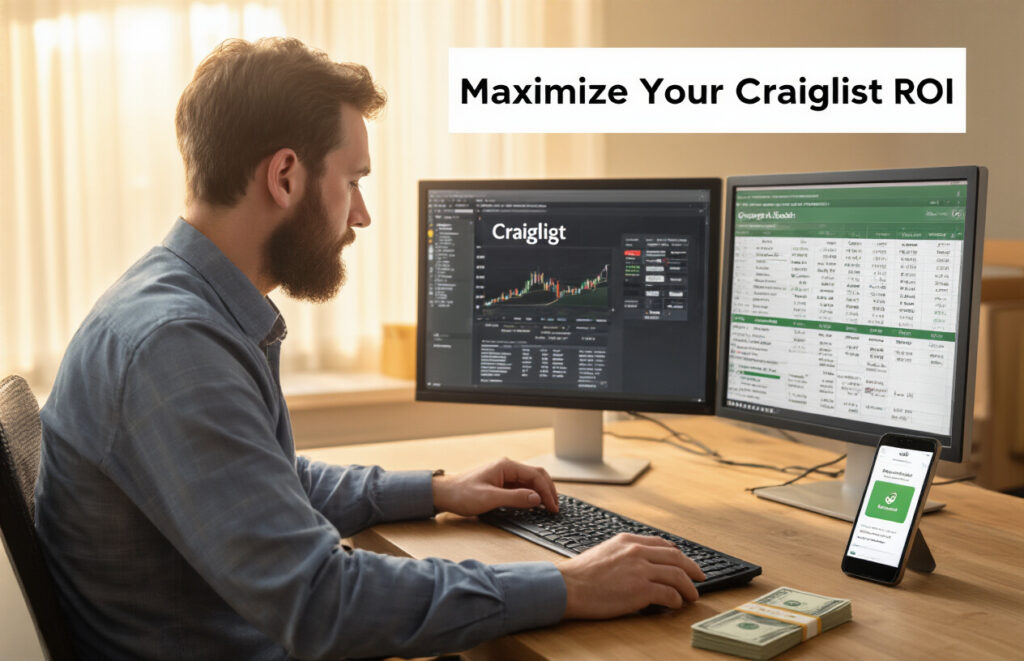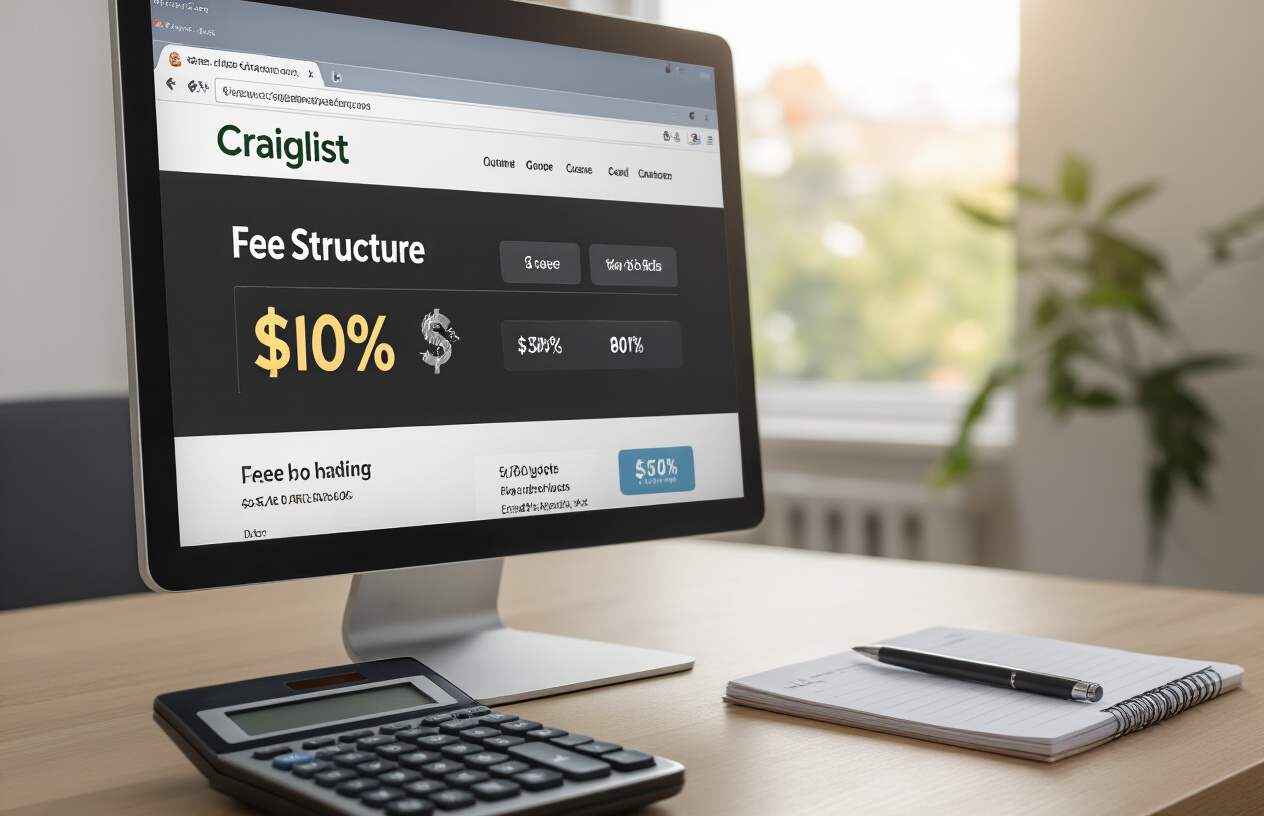Craigslist Posting Fees Just Changed—Here’s How to Optimize ROI

Heard the news? Craigslist just flipped the script on their posting fees, and your marketing budget might be feeling the pinch. Whether you’re a property manager trying to fill vacancies or a recruiter hunting for talent, those $5, $10, and $35 fees add up fast when you’re posting in volume.
Let’s be real—you can’t just abandon Craigslist. It’s still where millions shop for everything from sofas to jobs to apartments. But you absolutely can get more thoughtful about how you spend those dollars.
I’ve analyzed hundreds of Craigslist posting strategies and found the exact formula that maximizes ROI in this new fee environment. The difference between a poorly optimized posting strategy and a fine-tuned one? Thousands of dollars saved per month.
But here’s the real question—are you making any of the three critical posting mistakes that virtually guarantee wasted spend?
Understanding Craigslist’s New Fee Structure

A. Breakdown of updated posting fees by category
Craigslist just flipped the script on their pricing, and if you’re posting regularly, you need to know what’s changed. The new structure varies dramatically by category:
Job Postings:
- Standard job posts: $35 (up from $25)
- Featured job listings: $75 (up from $50)
- Gig opportunities: Now $10-15 (previously free in most markets)
Housing:
- Apartment rentals: $10 (up from $5)
- Real estate sales: $15 (previously $5)
- Vacation rentals: $12 (new category distinction)
For Sale:
- General merchandise: Still free (thank goodness!)
- Vehicles by dealer: $12 (up from $5)
- Furniture by dealer: $7 (previously free)
Services:
- Professional services: $10 (previously free in most regions)
- Creative services: $7 (new fee)
B. Comparison with previous fee structure
The difference between old and new is eye-opening:
| Category | Old Fee | New Fee | % Increase |
|---|---|---|---|
| Job Posts | $25 | $35 | 40% |
| Featured Jobs | $50 | $75 | 50% |
| Rentals | $5 | $10 | 100% |
| Real Estate | $5 | $15 | 200% |
| Dealer Vehicles | $5 | $12 | 140% |
| Services | Free | $7-10 | ∞ |
The biggest shock? Categories that were once free now have price tags. Services listings, which many small businesses relied on for free advertising, now cost $7-10 per post. That’s going to strike freelancers.
C. Regional variations in pricing
Craigslist didn’t take the one-size-fits-all approach. Prices vary based on where you’re posting:
- Major metros (NYC, SF, LA): Highest fees (add 15-20% to standard rates)
- Mid-size cities: Standard fee structure
- Rural areas: Discounted rates (typically 10-30% less)
For example, a job posting costs $45 in New York City but only $30 in rural Iowa. These regional differences reflect market demand and competition levels in each area.
Some regions got hit harder than others. The Pacific Northwest saw the steepest increases, while the Southeast maintained more moderate pricing jumps.
D. Implementation timeline
The rollout isn’t happening all at once:
- Phase 1 (Already active): Job postings and real estate categories
- Phase 2 (Starting next month): Services and dealer categories
- Phase 3 (Three months from now): All remaining categories
If you’re still seeing old prices, don’t get too comfortable. Craigslist is gradually updating its system across all regions.
They’re giving business accounts a 30-day grace period after their regional implementation date. After that, any scheduled posts will automatically be charged at the new rates. No grandfathering here – all users will eventually transition to the new structure.
Why These Changes Matter to Your Business

A. Impact on small vs. large volume sellers
Craigslist’s new fee structure hits different depending on your posting volume. Small sellers feeling the pinch? You bet.
If you’re posting just a few ads a month, these fee increases might seem like a gut punch. A $5 increase per posting adds up fast when you’re working with tight margins. Mom-and-pop shops and occasional sellers are scrambling to rethink their strategy.
Meanwhile, high-volume sellers are playing a whole different game. Sure, they’re paying more overall, but the cost per conversion often works out better at scale. These businesses typically have:
| Business Size | Old Monthly Cost | New Monthly Cost | Impact Level |
|---|---|---|---|
| Small (5-10 ads) | $25-50 | $50-100 | High |
| Large (100+ ads) | $500+ | $1,000+ | Moderate |
The big fish have wiggle room to absorb these costs or pass them along. They can also test which categories still deliver ROI worth the increased investment.
B. Category-specific considerations
Not all Craigslist categories got hit the same way. Real estate and automotive dealers face the steepest climbs, with some postings jumping from $5 to $15 overnight.
The services section? Still relatively affordable compared to specialized job boards or marketplace alternatives.
Furniture and household goods sellers might need to bundle items rather than creating separate listings. The math doesn’t work otherwise.
What’s flying under the radar is how these changes affect seasonal businesses. Holiday retailers and summer service providers can’t spread costs year-round, making timing more crucial than ever.
C. New opportunities created by the fee changes
Every market shakeup creates winners. As some sellers bail on Craigslist, competition drops in specific categories. A less crowded space means your posts stand out more.
The increased barrier to entry is filtering out low-effort listings. Users are noticing higher quality posts overall, which means better engagement for serious sellers who craft compelling listings.
Smart businesses are:
- Consolidating multiple items into a single, high-value post
- Creating more detailed, benefit-focused descriptions
- Adding better photos to maximize each paid listing
- Testing different posting days/times for maximum visibility
The fee changes are also pushing innovation. Some sellers are creating micro-landing pages linked from their Craigslist ads, essentially turning a basic listing into a sales funnel starter.
Bottom line? The players willing to adapt their approach can come out ahead while competitors struggle with the new normal.
Maximizing ROI Under the New System

Strategic posting timing for best visibility
The new Craigslist fee structure means you’ve got to be more thoughtful about when you post. Most categories see traffic spikes between 9:00 am and 6:00 pm on weekdays. That’s when people are commuting or taking lunch breaks.
Weekend mornings are a gold mine, too. Saturday between 10 am0 am and -1 pm is when most serious buyers are browsing. Your posts naturally drift down as new ones appear, so timing is everything.
Don’t just post once and hope for the best. Refresh your listings strategically:
- For high-competition categories: Every 48 hours
- For services/jobs: Weekly, preferably Mondays or Thursdays
- For real estate: Weekends and Wednesday evenings
Optimizing post content for higher conversion
With fees increasing, every post needs to work harder. Stop with the boring headlines. Try this formula instead: [Specific Benefit] + [Item/Service] + [Unique Qualifier].
Bad: “2019 Honda Civic for sale”
Good: “Fuel-Efficient 2019 Honda Civic – One Owner, All Service Records”
Photos matter more than ever. Use at least five high-quality images from different angles with good lighting. For products, include one showing scale and another highlighting key features.
Keep descriptions scannable with bullet points. Front-load the value proposition in the first two sentences. People skim, not read.
Smart budgeting for multi-post campaigns
The new fee structure changes everything about how you should budget.
| Posting Strategy | Old Approach | New Approach |
|---|---|---|
| Single category | Post multiple times | Fewer, better-optimized posts |
| Multiple areas | Post in all | Focus on the highest-converting areas |
| Frequency | Daily refreshes | Strategic 3-day cycles |
Track your cost-per-inquiry across different posting strategies. Set a firm ceiling on what you’ll pay per qualified lead. For most businesses, this ranges from $2 to $8, depending on margin.
If a category isn’t performing after three properly optimized posts, don’t throw good money after bad. Pivot to another approach.
Analytics to track performance metrics.
The days of “post and pray” are over. You need actual data now.
Create a simple tracking system using unique contact methods for each post:
- Different email addresses
- Unique phone extensions
- Custom URL parameters
Track these key metrics for each post:
- Views-to-inquiry ratio
- Inquiry-to-sale conversion
- Cost per conversion
- Time-to-first-response
- Day/time performance patterns
Most people skip this part, which is precisely why you shouldn’t. A simple spreadsheet updated weekly will put you miles ahead of competitors.
A/B testing strategies for post variations
With fees cutting into your margins, you need to know what works, not guess.
Test these elements one at a time:
- Headlines (emotional vs. factual approaches)
- Price points (listed price vs. “contact for price”)
- Image sequence (lead with product vs. lead with benefit)
- Description length (comprehensive vs. concise)
- Call-to-action phrases (“Call now” vs. “Message for details”)
Don’t change everything at once, or you won’t know what made the difference. Run each test for at least 3-5 posting cycles before making conclusions.
The magic happens when you combine all your winning elements into one super-optimized posting strategy.
Cost-Effective Alternatives to Consider

A. When to use Craigslist vs. other platforms
Craigslist isn’t always your best bet anymore, especially with these new fees. The platform still shines for local, urgent sales where buyers are actively searching rather than browsing. Think furniture, appliances, and event tickets.
But for higher-value items? Facebook Marketplace has stolen the spotlight. No fees, better buyer profiles, and in-app messaging make it a no-brainer for most consumer goods. Plus, Facebook’s algorithm can resurface your listing for weeks.
Specialty platforms often deliver better ROI for specific categories:
- Selling a car? CarGurus or Autotrader will connect you with serious buyers
- Got designer clothes? Poshmark users expect to pay more than Craigslist bargain hunters
- Electronics? OfferUp shows reliability ratings that build trust fast.
The real question isn’t “which platform is best?” but “where do my specific buyers hang out?” A $5 Craigslist fee might be worth it if your local contractors check it religiously for tools, but it’s wasteful if they’re all on specialized apps now.
B. Hybrid posting strategies across multiple sites
Smart sellers don’t pick just one platform anymore. They use a strategic combination.
Start with a free listing on Facebook Marketplace as your baseline. Then, selectively pay for Craigslist when targeting specific local demographics (like older buyers who haven’t migrated to newer apps).
Cross-posting works, but don’t copy and paste. Tailor your approach:
- Use Craigslist for straightforward, price-focused listings
- Leverage Facebook’s photo-rich format for visual items
- Save OfferUp for things that benefit from their in-app secure payment system
Remember to track which platform generates actual sales, not just inquiries. Many sellers waste money reposting on platforms that drive lots of messages but few completed transactions.
Consider timing, too. Post furniture near the 1st of the month when people are moving. List hobby equipment on payday weekends. This strategic timing often outperforms simply paying posting fees.
C. Free listing options are still available
Good news—Craigslist hasn’t gone entirely pay-to-play. Several categories still offer free listings:
- Community events and activities
- Discussion forums
- Lost and found
- Rideshare arrangements
- Free items (the “free” section)
The trick is getting creative with these free options and selling a couch. Post photos in “free” first with “photos of couch – see housing section” and include your contact info. Buyers browsing free stuff often check paid listings too.
Beyond Craigslist, don’t overlook these completely free alternatives:
- NextDoor (excellent for hyperlocal sales)
- Facebook Marketplace Groups (more targeted marketplace)
- Letgo (gaining popularity with younger sellers)
- Classified sections on Reddit subreddits for your city
The real winners in today’s market combine these free options with strategic paid placements. Test what works for your specific items rather than assuming you need to pay for visibility everywhere. Bulkanced Tactics for Power Users

A.Bulk posting discounts and opportunities.
Smart CBulkslist power users know that bulk posting can seriously slash your costs. With the new fee structure, posting in volume unlocks discounts that casual users miss out on.
If you’re posting 10+ listings per month, reach out to Craigslist directly about bulk rates. They don’t advertise these deals, but they exist. Some businesses report saving up to 25% through volume agreements.
The sweet spot? Auto dealers and property managers typically get the bulk of the arrangements. One property management company I spoke with dropped its per-listing cost from $35 to $25 by negotiating a quarterly posting package.
Don’t just ask for a discount—come prepared with your posting history and plans. Numbers talk.
B. Leveraging featured listings strategically
Featured listings cost more but deliver when used right. The trick is selective deployment.
High-ticket items justify the premium placement. That $3,000 couch? Worth featuring. Your $25 used blender? Probably not.
The data backs this up. Featured listings get 3-4x more views, but convert best for items priced above $500, where buyers expect to do more research.
Time your features strategically. Monday mornings and Thursday evenings show the highest engagement rates on Craigslist. Why waste premium placement during dead zones?
Rotate your featured listings rather than featuring everything simultaneously. This keeps your inventory looking fresh without breaking the bank.
C. Seasonal posting considerations
The Craigslist marketplace ebbs and flows with predictable seasonal patterns you can use to your advantage.
Summer months see higher engagement for recreational items, while January brings a surge in furniture and exercise equipment listings. Posting against these trends means competing with more listings at precisely the wrong time.
Smarter move? Plan your posting calendar around these seasonal shifts:
| Season | High-Performance Categories | Lower Competition Categories |
|---|---|---|
| Winter | Exercise equipment, Electronics | Patio furniture, Sporting goods |
| Spring | Garden supplies, Bicycles | Winter sports equipment, Heaters |
| Summer | Recreational vehicles, Boats | Academic materials, Winter clothing |
| Fall | Halloween/holiday items, Firewood | Swimming pools, Beach gear |
Some businesses stockpile posting credits during fee promotions, then deploy them during high-demand seasons. This approach can cut your effective cost-per-post by up to 30%.
D. Geographic targeting to minimize costs
Craigslist’s pricing varies dramatically by location, and smart users exploit this geography gap.
Posting in suburban areas often costs less than in city centers, while still reaching a similar audience.. A furniture store on the Philadelphia/Camden border saved $5,000 annually by shifting posts to the Camden side.
Cross-posting between neighboring areas isn’t just allowed—it’s an innovative business when the price differences are significant. Just check the posting rules first to avoid flagging.
The real hack? Some power sellers maintain addresses in multiple regions specifically to access lower-cost posting areas. The savings can be substantial for high-volume sellers.
Rural and small-town Craigslist sites often have lower fees but surprising reach. Inventory that appeals to buyers willing to drive (unique furniture, specialized equipment) can be listed in these cheaper zones with minimal Impact. A recent overhaul of Craigslist’s fee structure represents a significant shift for businesses that rely on the platform for advertising and customer acquisition. By understanding these changes and implementing the strategies outlined above—from optimizing post timing and content to utilizing analytics to track performance—you can maintain and even improve your return on investment despite the increased costs.
As you navigate this new landscape, remember that adaptability is key. Whether you choose to refine your Craigslist strategy, explore cost-effective alternatives, or combine multiple approaches, the focus should always remain on maximizing value for each dollar spent. Take time to evaluate your specific needs and audience behavior, then adjust your tactics accordingly. Your ability to pivot strategically now will position your business for success in the evolving digital marketplace.
Reaching qualified candidates faster means pairing automation with targeted platforms. Explore our Google for Jobs, ZipRecruiter, and Craigslist integrations to broaden visibility, and check out our Job Boards category for distribution best practices. Whether you’re scaling hourly roles or specialized positions, Job Multiposter and Job Distribution streamline posting and boost efficiency across every channel.